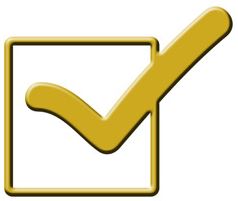
Critical Elements of Instructional Design

If you are developing elearning courses, over time you start to pick up on these patterns. In fact, with enough practice, much of this becomes second nature.
Still, it can be helpful to create a checklist so that you are always sure that your courses take into consideration the components that span across all projects.
If you have been creating online training programs for some time now, I am sure you have your own list, or could perhaps add to the one below. Think of the list I have included here as a starting-point rather than a be-all, end-all list.
Critical Instructional Design Components
Accessibility: Presenting the content in a way that does not require the learners to rely solely on one ability or sense.
Aesthetic-Usability Effect: How a learner perceives more aesthetic designs as easier to use and understand than those that do not take aesthetics into account.
Chunking: Combining multiple unites into logical chunks. This makes it easier for the learner to remember the details being presented.
Consistency: Conforming to a standard in design, language, presentation, and overall experience within the elearning program. Style-guides are a great way to maintain consistency.
Hierarchy: The order in which the components on the screen are presented and viewed by the learner. Hierarchy almost always takes into account the importance of the elements in regards to their positioning.
Legibility: Text should be easily read on the screen. Influencers for eligibility include font size, color, and contrast.
Readability: Not to be confused with the former, readability is in reference to how well the learner can understand the prose.
Source:
SHIFT ELearning

Justin Ferriman
@LearnDashLMS






